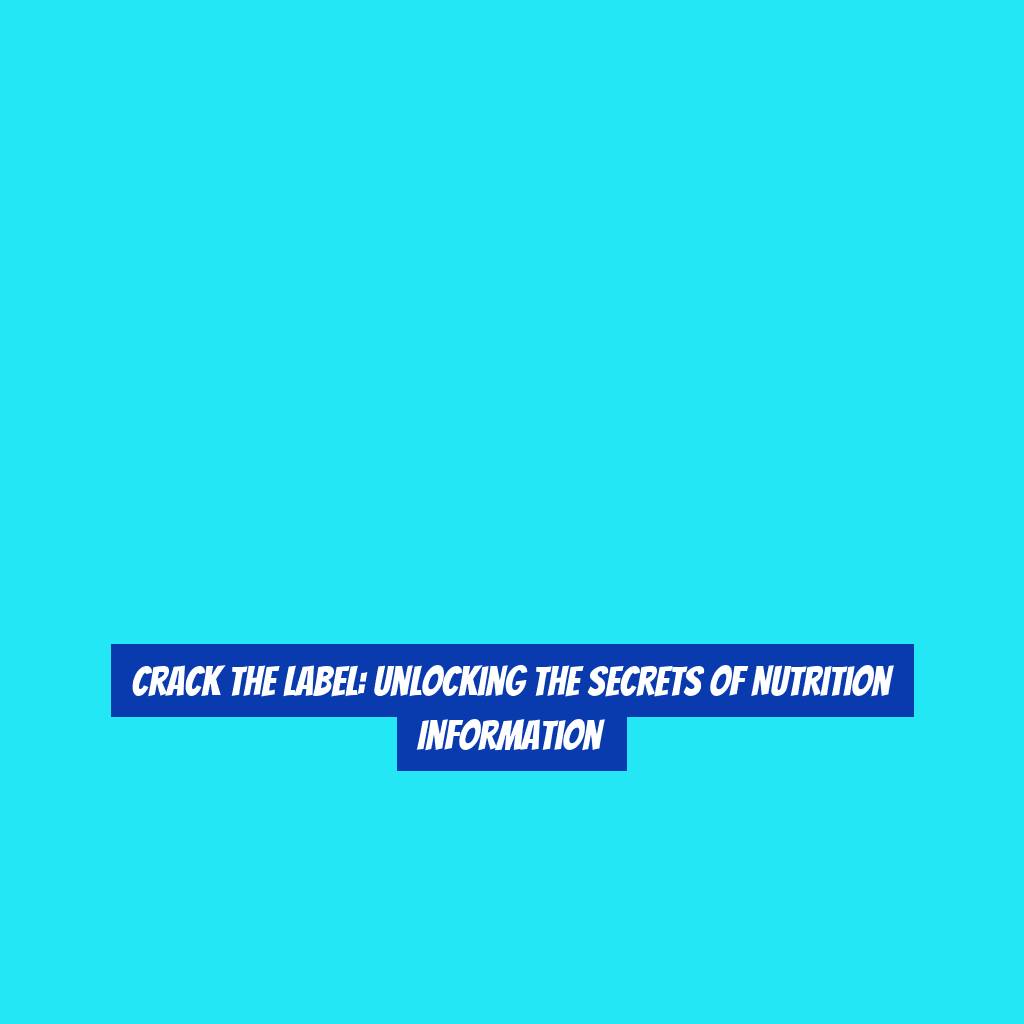Crack the Label: Unlocking the Secrets of Nutrition Information
You probably think you have a good handle on understanding nutrition labels, but have you ever wondered if thereG??s more to it than meets the eye? You might be surprised to learn that there are hidden secrets within those seemingly straightforward numbers and percentages.
What if I told you that uncovering the truth behind serving sizes, macronutrients, hidden sugars, and ingredient lists could completely change the way you approach the foods you eat?
ThereG??s a whole world of information waiting to be unlocked, and it could make a significant impact on your health and wellness.
Understanding Serving Sizes
Do you know how to accurately determine serving sizes for the foods you eat? Understanding serving sizes is crucial for managing your nutritional intake. ItG??s easy to underestimate the amount of food youG??re consuming, which can lead to overeating and an imbalance in your diet. The serving size listed on a nutrition label isnG??t just a suggestion; itG??s a precise measurement. Pay attention to the serving size and the number of servings per container to ensure youG??re not overindulging.
To accurately determine serving sizes, start by measuring out the recommended portion according to the label. This will give you a better idea of what an appropriate serving looks like.
Additionally, familiarize yourself with common visual cues, such as a deck of cards for meat or poultry, a tennis ball for fruit, or a golf ball for nut butters. These can help you estimate serving sizes when you donG??t have measuring cups or scales available.
Decoding Macronutrients
Understanding serving sizes is crucial for managing your nutritional intake.
Now letG??s turn our focus to decoding macronutrients. When you look at a nutrition label, youG??ll find information about three macronutrients: carbohydrates, proteins, and fats.
Carbohydrates provide energy for your body, and they come in two forms: simple carbohydrates, found in sugary foods, and complex carbohydrates, found in whole grains and vegetables.
Proteins are essential for building and repairing tissues, and they can be found in foods like meat, dairy, and legumes.
Fats, often misunderstood, are crucial for absorbing certain vitamins and providing energy. They also come in different types, such as saturated, unsaturated, and trans fats.
ItG??s important to pay attention not only to the amount of each macronutrient in a serving but also to the type of each macronutrient.
Keep in mind that while all macronutrients are necessary for a balanced diet, itG??s essential to consume them in the right proportions to maintain good health.
Understanding macronutrients can help you make informed choices about the foods you eat and their impact on your overall wellness.
Unveiling Hidden Sugars
Are you aware of the hidden sugars lurking in your everyday foods? While you may think youG??re making healthy choices, many processed and packaged foods contain hidden sugars that can contribute to weight gain and various health issues.
These sugars can go by many different names, such as high fructose corn syrup, dextrose, maltose, and more, making it difficult to identify them on nutrition labels. Even seemingly healthy foods like yogurt, granola bars, and tomato sauce can contain significant amounts of added sugars.
ItG??s important to check the ingredients list for these sneaky sugars and be mindful of the total sugar content listed on the nutrition label. Keep an eye out for terms like G??no added sugar,G?? G??unsweetened,G?? or G??sugar-freeG?? to help you choose products with less hidden sugars.
Analyzing Ingredient Lists
Uncovering hidden sugars in your everyday foods may require closely analyzing the ingredient lists for sneaky sweeteners that can contribute to various health issues. When examining the ingredient list, keep an eye out for terms like high fructose corn syrup, cane sugar, brown rice syrup, and other aliases for sugar.
Additionally, ingredients ending in G??oseG?? such as dextrose, sucrose, or maltose are all forms of sugar. Be cautious of artificial sweeteners like aspartame, sucralose, and saccharin, which may also be listed in the ingredients.
Furthermore, ingredients are listed in descending order by weight, so if sugar or a sweetener is one of the first few ingredients, the product likely contains a significant amount.
ItG??s crucial to be vigilant and aware of these hidden sugars, as excessive sugar consumption has been linked to obesity, diabetes, and heart disease. By carefully analyzing the ingredient lists, you can make informed choices about the foods you consume and take control of your health.
Navigating Nutritional Claims
To better comprehend the nutritional value of the foods you consume, learn to navigate through the various nutritional claims on packaging labels. When scanning food labels, itG??s crucial to understand the significance of terms like G??low-fat,G?? G??reduced sodium,G?? and G??high fiber.G??
G??Low-fatG?? means the product contains 3 grams or less of fat per serving, while G??reduced sodiumG?? indicates that the product has at least 25% less sodium compared to the regular version. Keep in mind that G??high fiberG?? should mean the product has at least 5 grams of fiber per serving. Moreover, terms like G??lightG?? or G??liteG?? can be misleading, as they mightnG??t necessarily refer to the productG??s calorie content.
Furthermore, be cautious of claims like G??naturalG?? or G??organic,G?? as they donG??t always guarantee a healthier option. G??NaturalG?? doesnG??t necessarily mean nutritious, and G??organicG?? refers to the way the product is grown or produced rather than its nutritional value. Additionally, phrases like G??made with whole grainsG?? can be deceptive if the product contains only a small amount of whole grains.
Understanding these claims will empower you to make informed choices about the foods you consume.
Conclusion
Now that youG??ve cracked the label, you can make more informed choices about the foods you eat. By understanding serving sizes, decoding macronutrients, unveiling hidden sugars, analyzing ingredient lists, and navigating nutritional claims, you have the tools to take control of your nutrition.
Keep using this knowledge to make healthier choices and improve your overall well-being.





